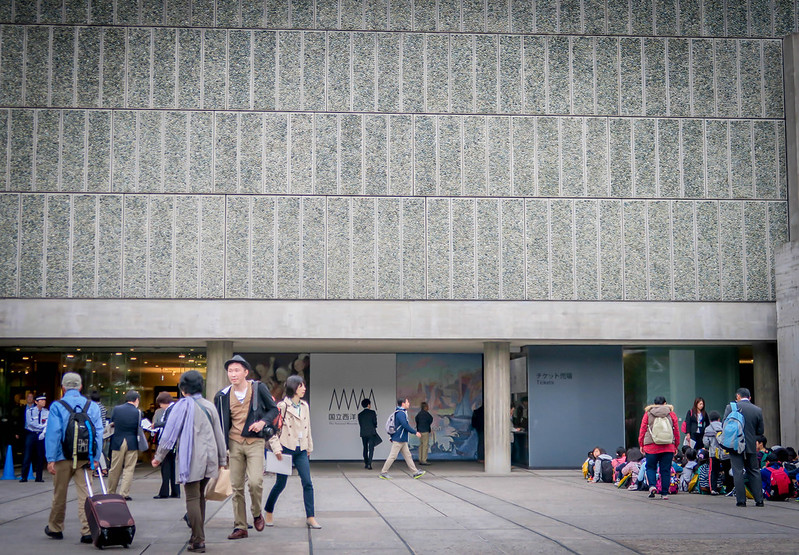
I visited the National Museum of Western Art in Ueno Park. I went to check out the exhibit of German Renaissance painter and printmaker, Lucas Cranach the Elder.
The building of the National Museum of Western Art was designed by Le Corbusier (Charles-Edouard Jeanneret), one of the pioneers of modern architecture and was added in July 2016 to the World Heritage List along with other works by Le Corbusier “for his outstanding contribution to the modern architecture movement”.
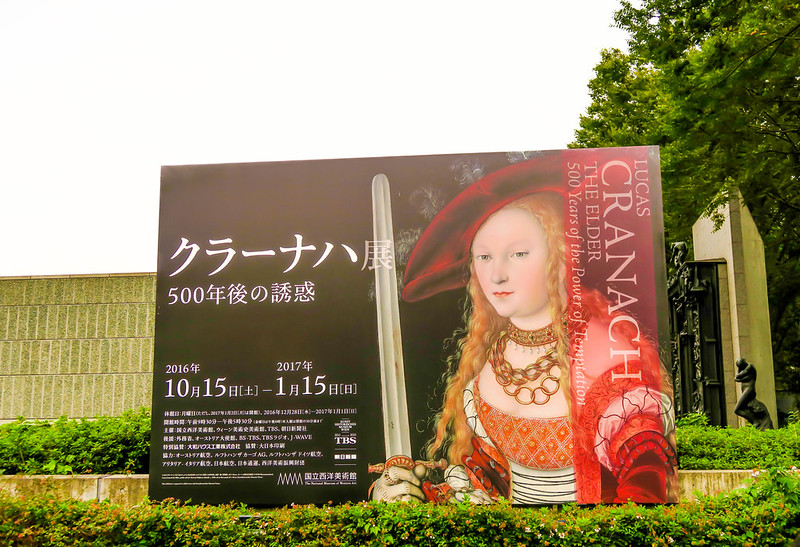
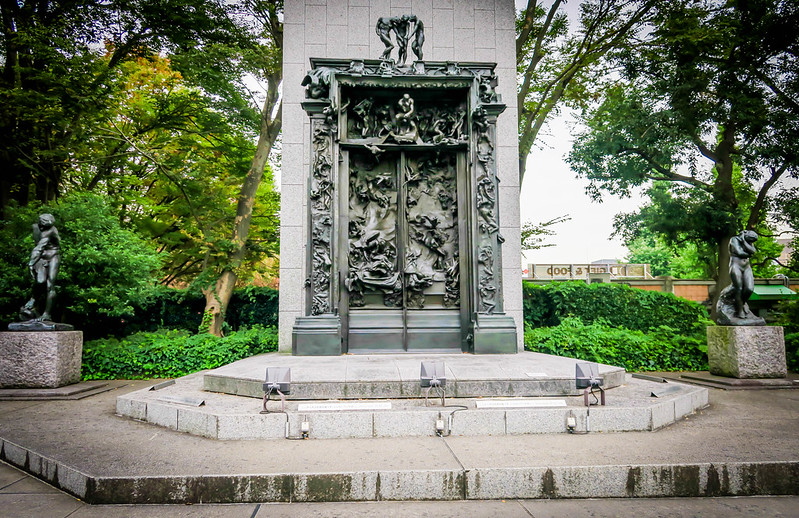

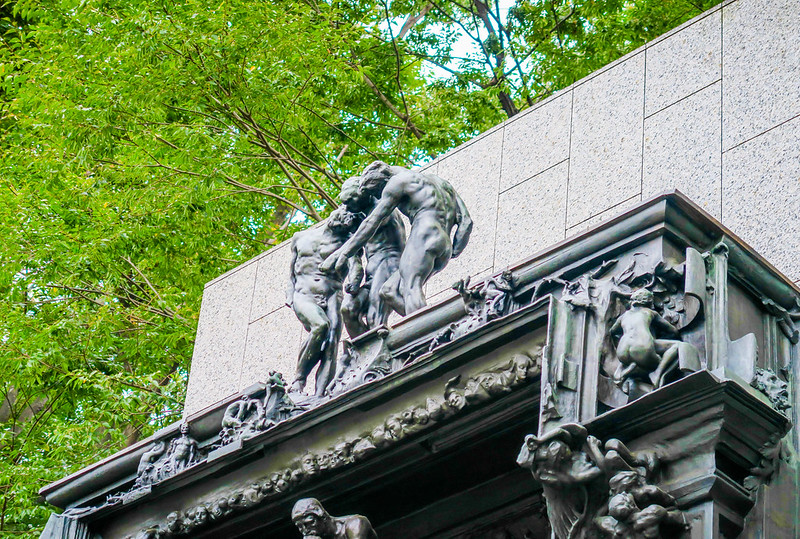
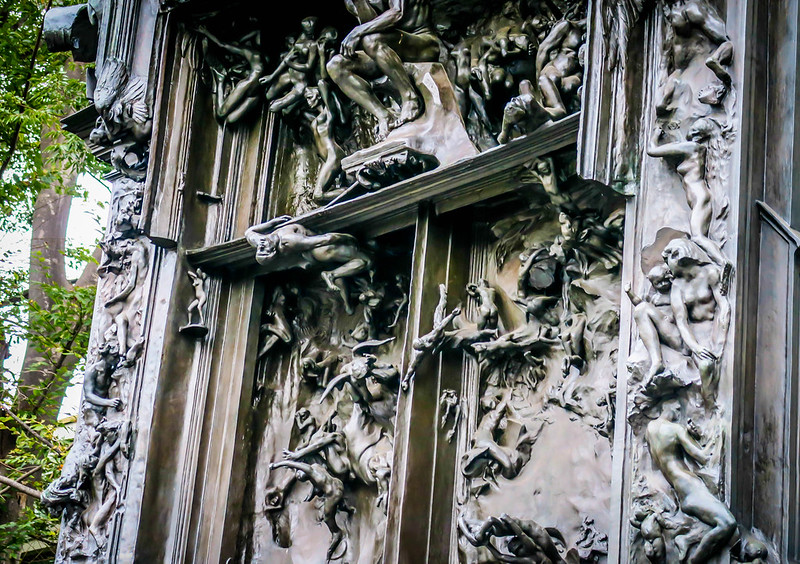
The museum is home of thousands of art pieces (from the Renaissance to the early 20th century) and outside is a collection of Auguste Rodin sculptures such as “The Thinker” (one of the 28 original castings in the world) and “the Gates of Hell” (one of seven in the world cast in bronze).
In 1880, Rodin was commissioned by the government to create a set of doors for the entrance of the newly planned construction of the Museum of Decorative Arts in Paris. A fervent reader of Dante, Rodin had already created a group work in 1876 entitled Ugolino and his Sons based on the Divine Comedy, and without hesitation, he decided to create a series of “low reliefs depicting the Divine Comedy” for the doors.
He immediately began from work on the project, basing his compositional forms on Ghiberti’s Gates of Heaven on the Baptistry in Florence. In his first preparatory sketches, Rodin divided the right and left doors into four vertically arranged panels with scenes from “Hell” shown in low relief over the eight panels with a giant figure placed in the center. However he lost Dante’s mythical order and it descended into a chaotic world. Rather than Dante’s world, he has entered the Hell found in man’s mind, expressed in Baudelaire’s poetry, Les Fleurs du Mal.
The third stage of the 3-D clay model, which became the gate’s final composition, can be seen in the colored plaster cast model. Both the content and the compositional forms have been transformed into chaos in this final version, which generally represents the forms of the completed bronze work. For the rest of his life Rodin was involved in the creation of this work, and he created numerous works which are independent from The Gates of Hell.
The man sitting on the center of the tympanum staring down at the figures descending to hell is The Thinker, and The Three Shades standing on top of The Gatse are closely related to the form of Adam. Meditation and Standing Fauness on the right edge of the tympanum and Orpheus and the Maenads stand on the left hand. In the lower part of the right door, Fugit Amor, and in the center of the left door Nereides.
The relief on the left attached pillar La Belle Heaulmière and above that pillar Fallen Caryatid. The relief carving I am Beautiful is placed on the upper part of the attached pillar on the right and on the left of The Thinker, the male and female figures separated as Crouching Woman and the man with his body bent back from the upper part of the left door. This large monument was never actually used and it was not cast in bronze during Rodin’s lifetime.
The Gates were finally cast in the 1920s, and including recent casts, there are now seven Gates in bronze throughout the world. The first two bronzes were cast under commission by Kojiro Matsukata. (Source: Masterpieces of the National Museum of Western Art, Tokyo, 2009, cat. no.129)
To the left of “The Gates of Hell” is Adam, but on the right is Eve which is based on the work of Rodin, but when the original model became pregnant, Rodin abandoned the project and so, in 1901-1907, Emile-Antoine Bourdelle sculpted the marble from Rodin’s plaster model.
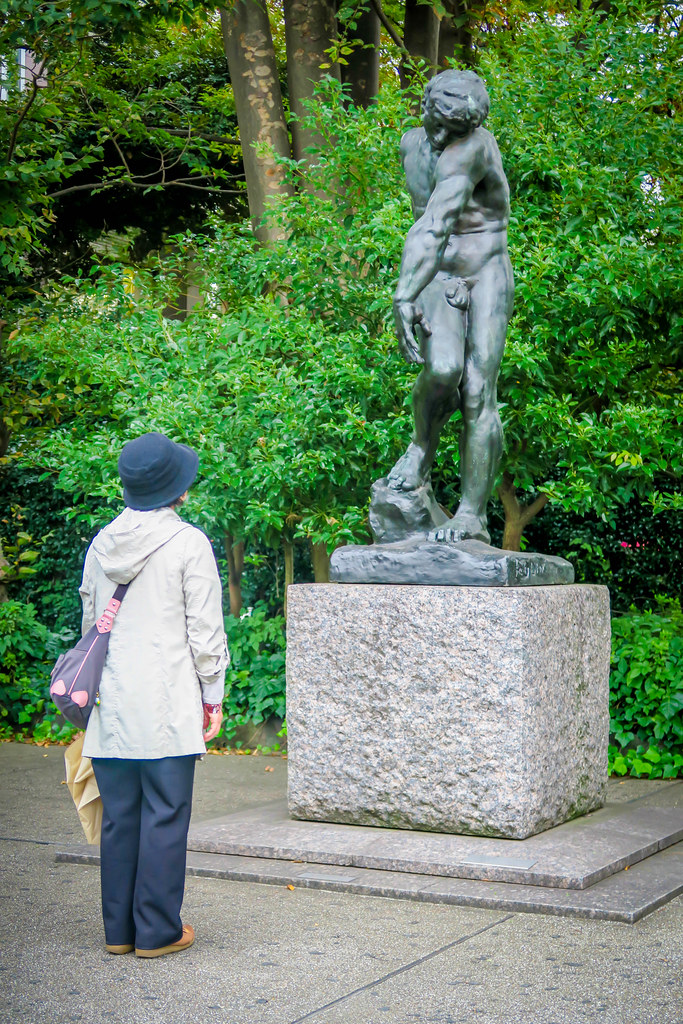
The Three Shades were probably created in the process of creating Adam. The image of Christ in the Pièta by Michelangelo in the Florence Cathedral can be clearly seen as an influence on Adam’s physique and form. Also, we can imagine Adam’s fingers receiving life from God in The Creation of Adam in the Sistine Chapel ceiling frescos, in the expression of the fingers on Adam’s right hand. When a plaster cast of this work was exhibited in the 1881 Salon, it was called The Creation of Mankind. (Source: Masterpieces of the National Museum of Western Art, Tokyo, 2009, cat. no. 131)

The marble sculpture of Eve in reduced scale was created after he abandoned, but this life-sized figure was not displayed until its entrance in the 1899 Salon. From 1901 through 1907 Bourdelle sculpted Eve in marble based on Rodin’s plaster model as a praticien for Rodin. This museum’s statue of Eve is thought to have been cast from the marble sculpture. (Source: Masterpieces of the National Museum of Western Art, Tokyo, 2009, cat. no. 132)

Bourdelle also sculpted “Hercules the Archer”.
Emile-Antoine Bourdelle’s “Hercules the Archer” (1909). This work which immortalized the name of Bourdelle takes as its subject one of the “twelve labors” of the hero Heracles from Greek mythology. This sculpture captures the instant of the arrow’s release as Heracles pulls back his bow with all of the strength of his powerful body in his effort to shoot the voracious birds Stymfalides.
The tension coursing through his brawny muscular body is filled with a wonderful spiritual energy when compared to the lively physical forms of Rodin’s figures. This work was extremely well received when it was entered in the 1910 Salon of the Société Nationale des Beaux-Arts. The critic Charles Maurice praised the work with the comment “Realism extended to the realm of Idealism.” (Source: Masterpieces of the National Museum of Western Art, Tokyo, 2009, cat. no. 142)

But my favorite would be the Burghers of Calis.
In 1884, the city of Calais decided upon Rodin as the creator of the monument of the benefactor of the city, Eustache de Saint-Pière, after long contemplation. During the Hundred Years War when the King of England crossed the English Channel and encircled the city of Calais in 1347, five of the burghers of the city as well as Eustache went as hostage to the English camp to plead for the safety of the people of the city.
Rodin, moved by the chronicle written by Froissart, created a group of six despairing and suffering figures, instead of a monument of unique figure, Eustache. The burghers hold the keys of the city in their hands, have ropes around their necks and walk barefoot as they leave the city gates. The city fathers of Calais, who expected heroic figures, did not understand Rodin’s suffering and solemn figural expression and refused it. As a result, the work was not unveiled in Calais until seven years after its completion. (Source: Masterpieces of the National Museum of Western Art, Tokyo, 2009, cat. no. 138)
The sculptures feature six figures in despair and suffering. The Burghers hold the keys of the city in their hands, ropes around their necks and walk barefoot as they leave the city gates. The city fathers of Calais were not thrilled by the non-heroic sculpture of Rodin and thus refused it. The sculptures were purchased by the Japanese government in 1959.
If you love renaissance to the early 20th century art, definitely visit the National Museum of Western Art.
